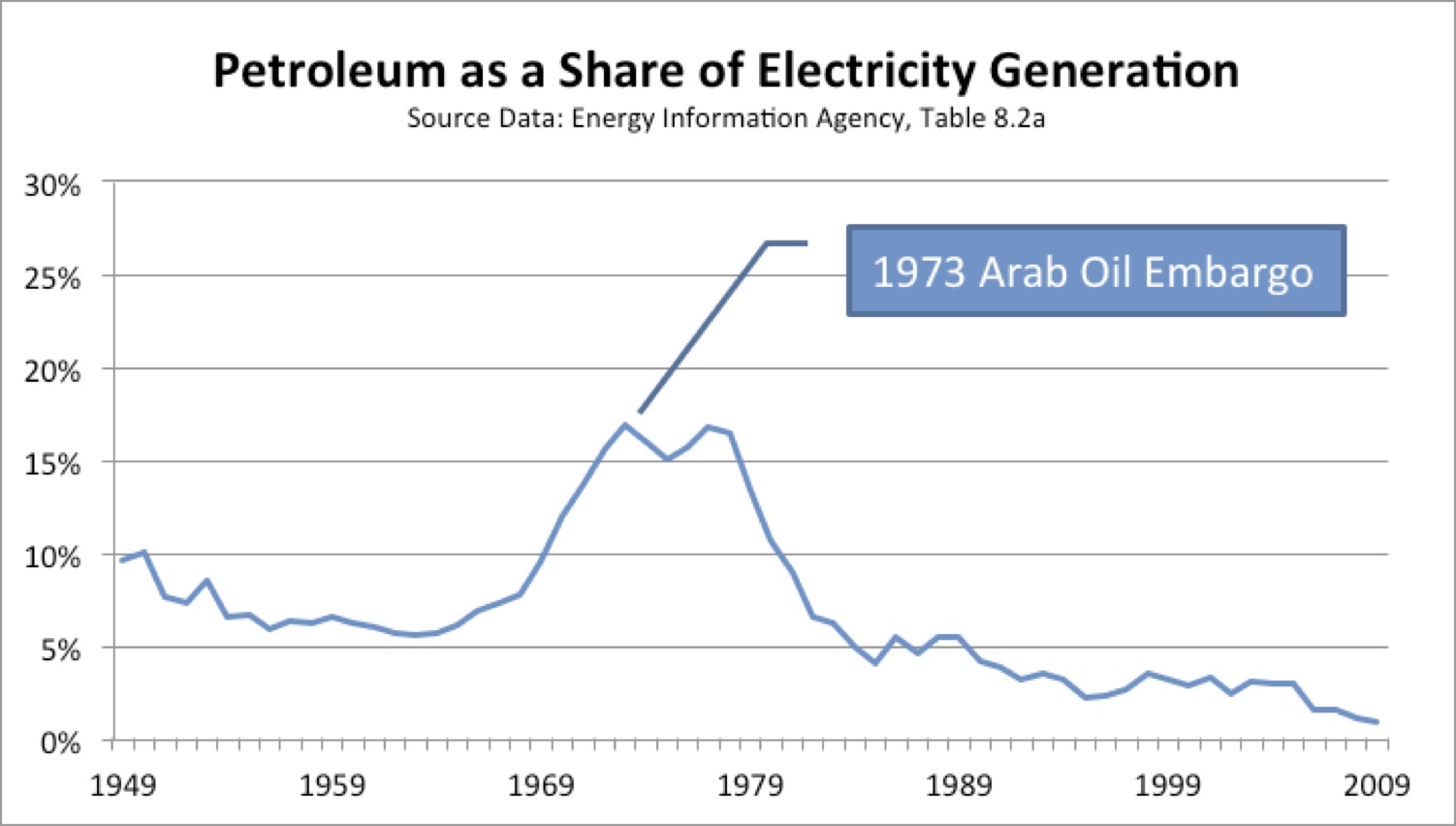Imagine driving on a cleaner, domestic, oil-free fuel, at a cost that’s roughly equivalent to dollar-a-gallon gasoline. That, in essence, is the reason why thousands will gather this week at the Los Angeles Convention Center for the International Electric Vehicle Symposium. I’ll be there, speaking on a panel highlighting the crucial role electric utilities will play in breaking Big Oil’s monopoly on transportation fuels. To borrow a line from a paper we wrote on the subject: “Just as the oil industry was instrumental to the success of the internal combustion engine, the electric industry will play a central role in determining the fate of the electric vehicle.” Who would you rather buy your transportation fuel from, Saudi Arabia, Nigeria, Venezuela, or your local utility?
Electricity is made from a diverse mix of largely domestic resources. Some utilities are cleaner than others, but on average, driving an electric car emits about half as much carbon pollution as the typical gasoline car. In states with cleaner utilities, such as California, driving on electricity emits only a quarter as much carbon pollution. And that’s today. Twenty-nine states, plus the District of Columbia, have set goals for increasing renewable generation, and market forces are pushing aging coal plants out of the mix. In other words, unlike gasoline, which will only become dirtier as oil companies resort to expensive and increasingly polluting resources such as tar sands, electricity gets cleaner every year.
Driving on electricity already means driving oil-free. There was a time when almost 20% of our nation’s electricity was generated using petroleum, but utilities and utility regulators made a concerted effort to get off oil following the 1973 Arab Oil Embargo.
It worked. Today, less than one percent of our nation’s electricity comes from petroleum, and that’s almost exclusively due to Hawaii, where petroleum-fired plants generate three-fourths of the island’s electricity. It’s no coincidence that the price of electricity in the “Aloha State” is three times the national average. Thankfully, Hawaii is undertaking heroic efforts to get off oil and has some of the nation’s most ambitious plans to accelerate energy efficiency and renewable generation. The chart above shows it can be done.
The electric industry’s success in ridding itself of petroleum demonstrates we have the power to choose our energy future. Those who would perpetuate our addiction to oil are calling for more drilling in wild areas, but we need not fall victim to their empty and tired rhetoric. The simple fact is that the recent expansion of US drilling has had no impact on gas prices, which go up and down on the rollercoaster of the global oil market.
Thankfully, you can choose to get off that wild ride. In addition to the already available models, automakers will introduce a dozen or so new cars this year that plug in to take advantage of a cleaner, domestic fuel, the price of which has been roughly the equivalent of buck-a-gallon gasoline for the last four decades. That stability is due to the fact electricity is oil-free, made from a diverse set of resources, and carefully regulated by state public utilities commissions. If you’d like to drive past the pump and refuel at home, don’t forget to call your local utility, your alternative to Big Oil.

